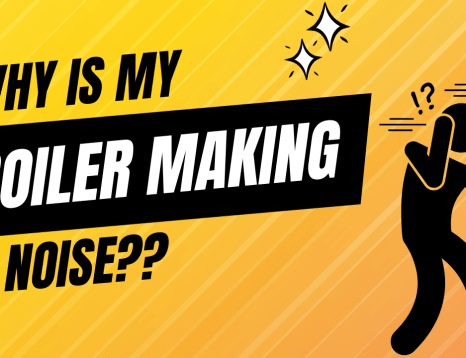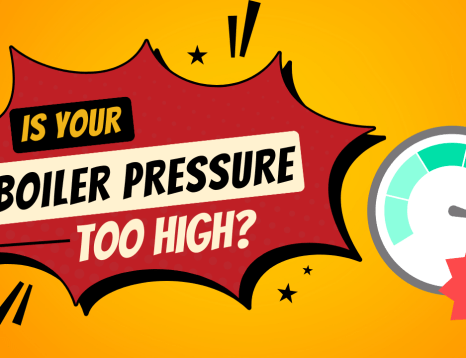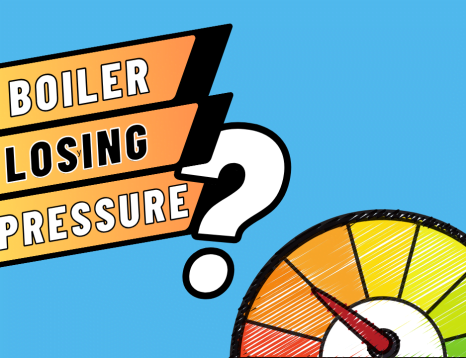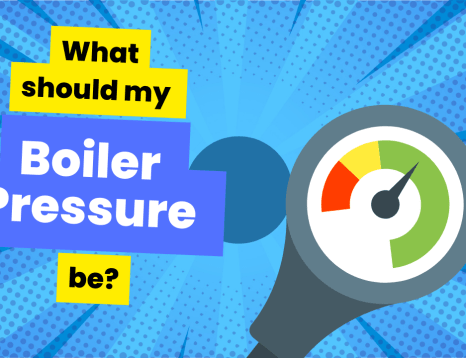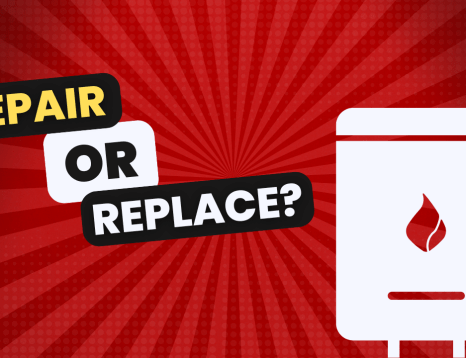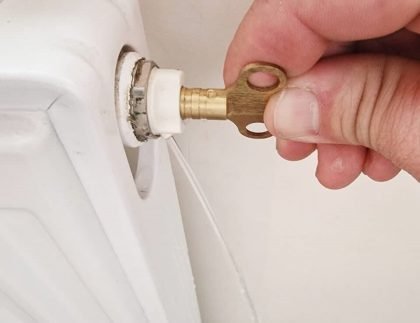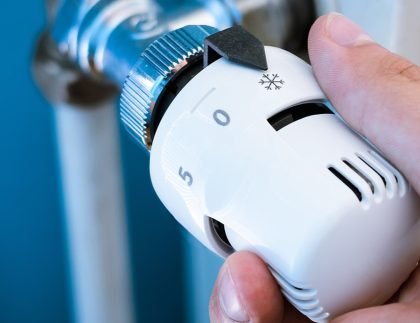
How Long Does a New Boiler Installation Take?
A new boiler installation time scale depends of a few different factors, but here’s an idea of what to expect.
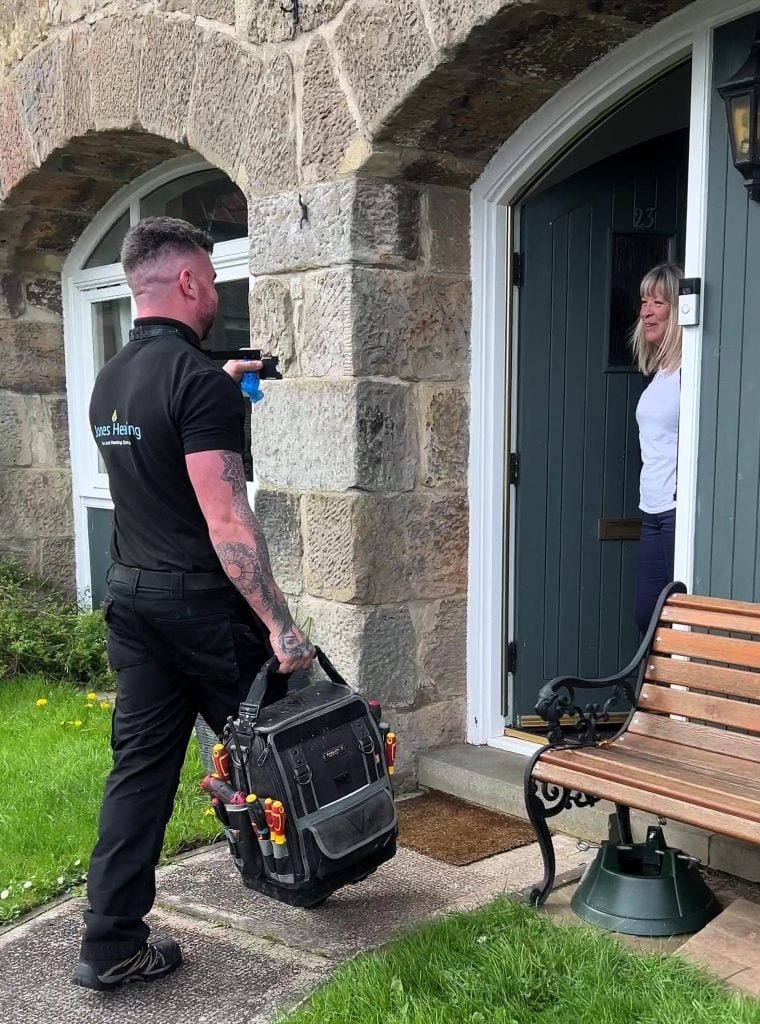
Straight forward boiler installation, same location same boiler type
Typically, straight forward boiler installations take 1 – 2 days. Things are usually back up and running within 1 day and you’re never usually without heating or hot water overnight. Sometimes it’s important to spend extra time making sure the system is clean before the boiler is installed.
Boiler type conversion (heat only to combi for example) or relocation of the boiler installation
As you can imagine converting the boiler type or relocating the boiler has a bit more work involved. Typically 2 – 3 days is a reasonable time scale to expect the boiler installation to take. However, this could quite easily run into 4 days, especially if only one person is completing the works on their own.

Your New Boiler from Jones Heating
Experience total peace of mind with our boiler installation service, designed to keep your home cosy and warm without driving up your energy costs. We're proud to install the most reliable, energy-efficient boilers on the market. You can expect expert advice, fair prices and all work completed to the highest standards.
Whether your home is small or large, our boiler’s are the perfect fit for every type of household. With 17 years of experience Jones Heating offers all this and more with our professional boiler installation, repair and service options for homes in Dunfermline, Kirkcaldy and throughout central Fife.
Here is a handy step-by-step guide to the new boiler installation process from Worcester Bosch
Boiler Installation FAQs
The cost of boiler installation depends on several factors, including the size of your home and the type of boiler itself. Whatever the case, we’ll provide a free, no-obligation quote which outlines all of the costs clearly, so you can make an informed decision about what’s best for you and your home.
A new boiler installation time scale depends of a few different factors, but here’s and idea of what to expect.
Straight forward boiler installation, same location same boiler type – Typically, straight forward boiler installations take 1 – 2 days. Things are usually back up and running within 1 day and you’re never usually without heating or hot water overnight. Sometimes it’s important to spend extra time making sure the system is clean before the boiler is installed.
Boiler type conversion (heat only to combi for example) or relocation of the boiler installation – As you can imagine converting the boiler type or relocating the boiler has a bit more work involved. Typically 2 – 3 days is a reasonable time scale to expect the boiler installation to take. However, this could quite easily run into 4 days, especially if only one person is completing the works on their own.
A good boiler can last upwards of a decade if it’s properly installed and well maintained.
A combi boiler is a boiler which provides instantaneous hot water. It does this by using a lot of energy and heating the cold water that passes through it when running a hot tap.
It also provides hot water to the radiators too, hence the name ‘combi boiler’ (short for combination boiler) it does a combination of both hot water for your taps and hot water for your radiators all in the one box.
Combi boilers are more suited to smaller properties which have 1 bathroom because we’re limited on how much hot water we can get at one time.
They are ideal where space is an issue because everything you need to make it work is all in the one box.
A system boiler is a boiler which produces heated central heating water.
The system boiler then pumps the water through the pipework which is delivered to either a hot water cylinder, a radiator heating system and underfloor heating system. There are other scenarios where a system boiler could be used but these are the most common.
This typically requires less energy than a combi boiler because we’re not having to throw a lot of energy into cold water to heat it up instantly ready to be drawn off from the taps.
A heat only boiler is similar to a system boiler in that it produces hot central heating water which we can deliver to a number of different systems.
However, system boilers have a few extra components in that a heat only doesn’t. For example, system boilers have a pump built into them and an expansion vessel.
So why would we not just install system boilers? I hear you ask. Well the pumps and expansion aren’t always big enough for the job, so having a heat only boiler means we can fit the right size pumps and vessels in a different location.
Also, heat only boilers can be installed on gravity fed systems which is very useful when someone has an old system which could leak if we put under a higher pressure.
So heat only boilers definitely have their uses.
It’s very important you get the right size boiler for your home. Go too big and your boiler will struggle to run low enough when it needs to which causes it to stop and start more often. This isn’t good for it in the long run.
Go too small though and it’ll run as hard as it can and never really get you where you want to be.
The kW size you need will really depend on what sort of boiler you plan to have.
For example, a combi will typically require a higher kW because of all the extra heat it needs to heat the cold water up to the right temperature which usually exceeds the heat requirement on the heating system, in which case you’re usually covered with regards to the heating system.
A heat only boiler and system boiler kW size will really depend on one of a couple things. If you expect to consume a lot of hot water which will need to be reheated rapidly and what the central heating kW requirement is. Whichever is greater.
If you don’t expect to use more than what your hot water cylinder stores so often, then you can have a lower kW and allow the boiler to heat the hot water cylinder more gradually.
We always advise to try and control the hot water separately from your heating system, otherwise you could starve the other of heat. Hot water should always take priority.
We go into a lot more detail about sizing your boiler here – How to determine what kW your boiler needs to be.
Debris from the heating system is one of the biggest killers of boilers.
Debris is caused by corrosion of the radiators. The corrosion process can be slowed down but unfortunately it can’t be stopped.
We use a chemical to slow the process down but over time the debris still occurs.
The debris from the radiators breaks off and makes its way back to the boiler and lodges itself into the components and leading to break down.
A magnetic filter is a device which is designed to capture the debris from the heating system before it gets into the boiler.
Magnetic filters are relatively cheap when compared to the job they actually do. The cheapest ones are around £50-60 to purchase, but we’ve had experiences where they’ve leaked after a year or 2.
We recommend the Spirotech MB3, Fernos TF1 Omega, and the Adey Magnaclean. These price range from around £75 to £140.
A Magnetic filter is definitely a good investment, especially whilst you’re having a new boiler installation.
Smart thermostats are designed to help you save money and be more comfortable, they’re smart because they can learn when it can turn off the heating to prevent it from going over the 20°c that you asked for.
We call that an ‘overshoot’, and preventing that overshoot is one of the clever things that makes a smart thermostat start.
So yes, a new smart thermostat installation will definitely help control your home to a much more comfortable, steady temperature.
As mentioned above, debris from the heating system is one of the biggest killers of boilers. Having a magnetic filter definitely helps.
It’s always best to ensure that as much debris is removed from heating system when having a new boiler installation.
Flushing the heating system also helps bring back the efficiency to the radiators which makes a huge difference to how the system works over all.
There’s a number of different ways to do this. Here’s a quick over view of the few we do.
Chemical flush – A chemical flush is our basic entry flush, and comes included in all of our boiler installations.
We add a cleaning chemical into the system which helps breakdown the sludge and debris so it’s easy to move.
We then dump the dirty water into a suitable place (like a foul drain), we repeat the process until all the chemical has been removed from the system and the heating system water is nice and clear.
We confirm this with a piece of testing kit. Once the system is clean we can add an inhibitor to the system.
This helps slow down corrosion which causes the debris to occur in the first place.
Magnetic flush – A magnetic flush is very good flushing technique, especially when there is a lot debris which is magnetic.
Most of the time the debris is magnetic, but in some occasions the water is dirty with no magnetic particles in which case a magnetic flush wouldn’t be effective.
The flushing system consists of 2 very large magnetic filters.
A cleaning chemical is added to the heating system to help break down the debris and sludge.
The radiators are agitated with a special tool that breaks away the debris from the radiators which is then picked up by the large magnetic filters further down the line.
The cleaning chemical is then removed from the system and an inhibitor is added to help prevent the debris from returning.
The results from the magnetic flush is certainly better that the standard chemical flush.
Power flush – The power flush system is the highest level flush system we offer.
It’s designed to clear the debris and any blockages that is in the heating system by using force.
The power flush machine is basically a very large, powerful pump which pushes the water round the heating system at a high velocity.
A strong cleaning chemical is added to the system to help break down the sludge and debris.
Each radiator is flushed out one by one until all of the debris and sludge has been removed.
The cleaning chemical is then removed from the system, and an inhibitor added to help prevent the debris from coming back.
The results from a power flush have been proven to be more effective that a magnetic flush.




